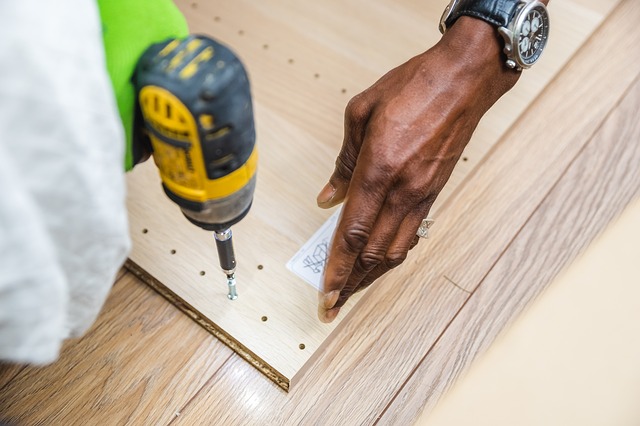Flat pack
Contents |
[edit] Introduction
DfMA Overlay to the RIBA Plan of Work, Mainstreaming Design for Manufacture and Assembly in Construction, 2nd Edition, published by the RIBA in 2021, defines flat pack as: ‘A term to describe prefabricated assemblies that are transported to site as flat, 2D elements as opposed to volumetric 3D units. They trade speed of on-site assembly for transport efficiency.’
Flat pack is a term typically associated with furniture. Flat pack furniture is also known as ready-to-assemble (RTA) furniture, knock down (KD) furniture or kit furniture.
This method of production can be used for items such as shelves, bookcases, tables, cupboards and so on. These items of furniture are mass produced as individual components. They are packaged so they can be purchased, transported and assembled by the customer at their final destination. Basic hardware and instructions are generally included.
[edit] History
Early flat pack furniture goes back to the mid-1800s with the introduction of the bentwood bistro chair. This chair was invented by Michael Thonet, a cabinet maker born in Germany.
The flat pack concept was advanced during the First World War by an American company known as Home Art Masters, but it was not successful. Experiments with flat pack furniture continued in the 1940s and 1950s, but it didn’t gain wide acceptance until the Scandinavian company, IKEA introduced a range of flat pack furniture in 1956.
[edit] Beyond furniture
On a larger scale, the flat pack method of production can also be applied to other forms of manufacturing, such as modular buildings. These are structures made from components manufactured on assembly lines in factories then assembled on site.
IKEA has made inroads into the development of modular construction, such as hotels and housing. This has sometimes been labelled by the press as 'flat pack homes'.
[edit] Related articles on Designing Buildings
Featured articles and news
UK Infrastructure: A 10 Year Strategy. In brief with reactions
With the National Infrastructure and Service Transformation Authority (NISTA).
Ebenezer Howard: inventor of the garden city. Book review.
The Grenfell Tower fire, eight years on
A time to pause and reflect as Dubai tower block fire reported just before anniversary.
Airtightness Topic Guide BSRIA TG 27/2025
Explaining the basics of airtightness, what it is, why it's important, when it's required and how it's carried out.
Construction contract awards hit lowest point of 2025
Plummeting for second consecutive month, intensifying concerns for housing and infrastructure goals.
Understanding Mental Health in the Built Environment 2025
Examining the state of mental health in construction, shedding light on levels of stress, anxiety and depression.
The benefits of engaging with insulation manufacturers
When considering ground floor constructions.
Lighting Industry endorses Blueprint for Electrification
The Lighting Industry Association fully supports the ECA Blueprint as a timely, urgent call to action.
BSRIA Sentinel Clerk of Works Training Case Study
Strengthening expertise to enhance service delivery with integrated cutting-edge industry knowledge.
Impact report from the Supply Chain Sustainability School
Free sustainability skills, training and support delivered to thousands of UK companies to help cut carbon.
The Building Safety Forum at the Installershow 2025
With speakers confirmed for 24 June as part of Building Safety Week.
The UK’s largest air pollution campaign.
Future Homes Standard, now includes solar, but what else?
Will the new standard, due to in the Autumn, go far enough in terms of performance ?
BSRIA Briefing: Cleaner Air, Better tomorrow
A look back at issues relating to inside and outside air quality, discussed during the BSRIA briefing in 2023.
Restoring Abbotsford's hothouse
Bringing the writer Walter Scott's garden to life.
Reflections on the spending review with CIAT.
Retired firefighter cycles world to raise Grenfell funds
Leaving on 14 June 2025 Stephen will raise money for youth and schools through the Grenfell Foundation.
Key points for construction at a glance with industry reactions.
























